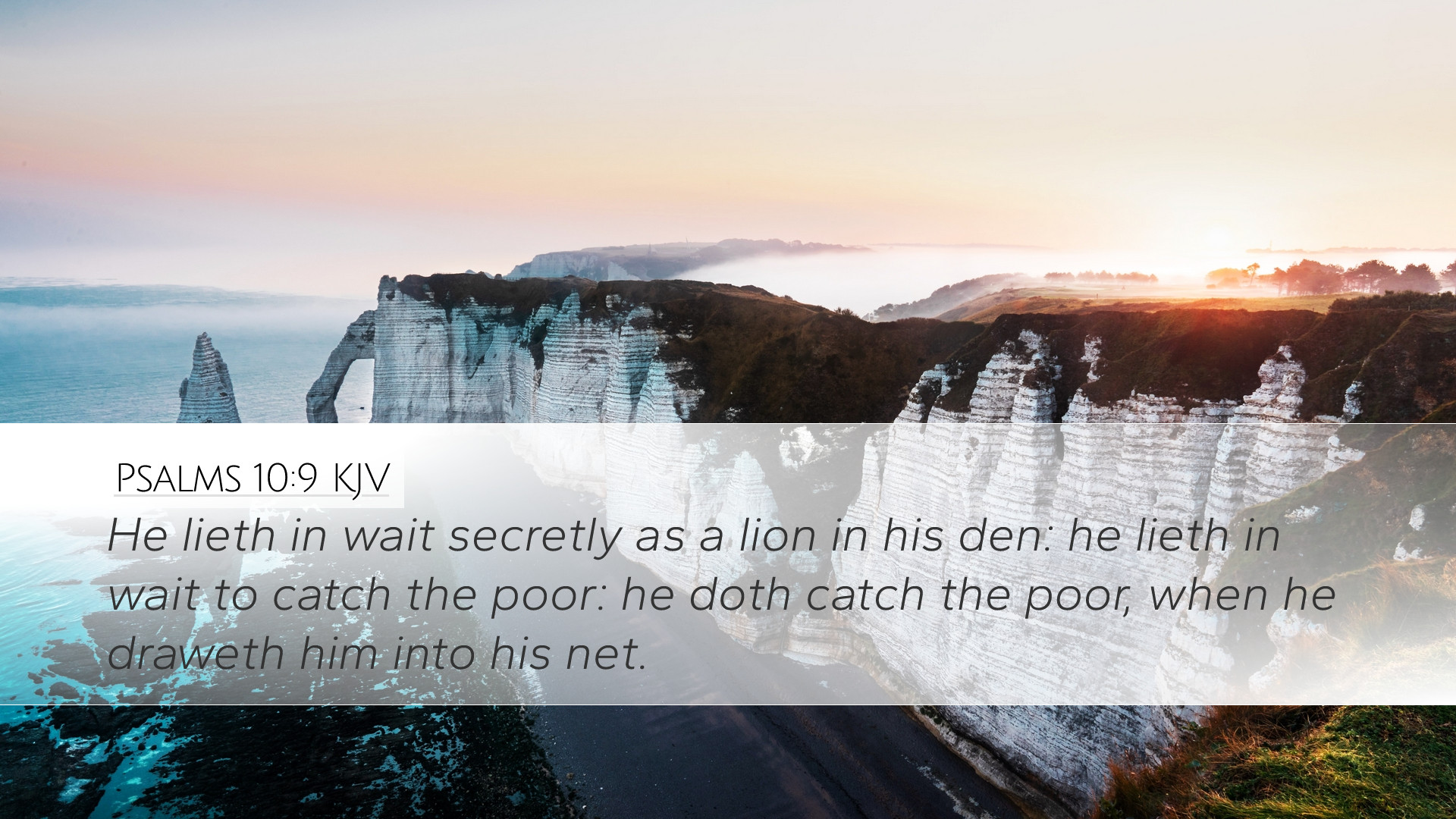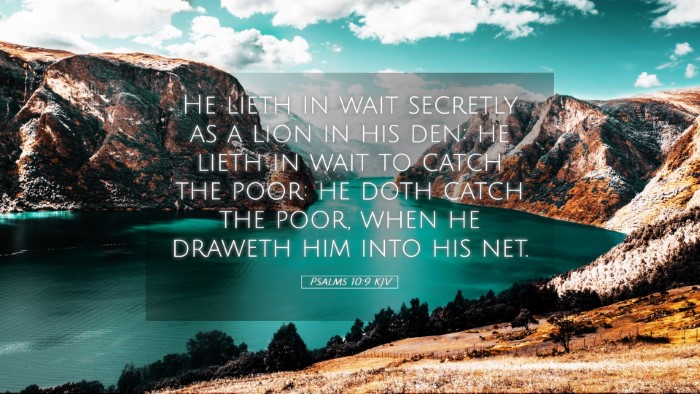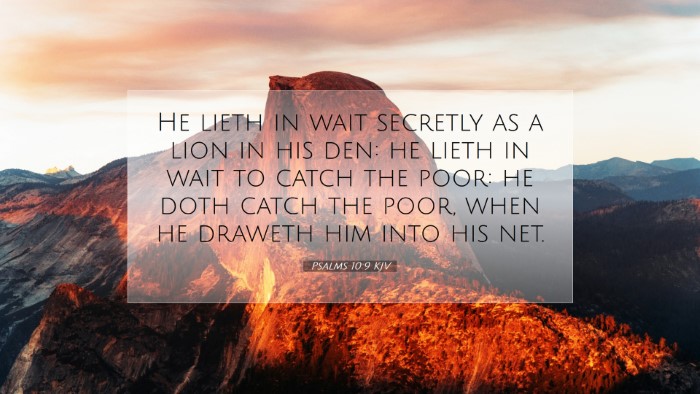Psalms 10:9 - Commentary Summary
Psalms 10:9 states, "He lieth in wait secretly as a lion in his den: he lieth in wait to catch the poor: he doth catch the poor, when he draweth him into his net."
This verse draws a vivid picture of the predatory nature of the wicked and their schemes against the vulnerable, employing strong animal imagery to highlight their cunning and ferocity.
Contextual Analysis
The context of this psalm reflects a deep anguish over the apparent triumph of the wicked and the suffering of the righteous. The psalmist grapples with the problem of evil, questioning why God seems distant in times of oppression.
The verse encapsulates the theme of hidden dangers that threaten the innocent, serving as a reminder of the pervasive injustice that the psalmist observes.
Commentary Insights
-
Matthew Henry's Perspective:
Henry emphasizes the cunning nature of evil. He notes that just as a lion lies in wait for its prey, so do the wicked diligently plot against the poor and helpless. The imagery suggests not only the stealth and patience of the predator but also the calculated manner in which the oppressors ensnare their victims. Henry argues that the use of this imagery serves to highlight the need for God's deliverance and justice, as the innocent have no means to escape the claws of those who seek to exploit them.
-
Albert Barnes' Interpretation:
Barnes elaborates on the metaphor of the lion, relating it to the ferocity of the wicked man. He draws parallels to the biblical accounts of lions preying on sheep, further illustrating how the oppressors act with brutal disregard for the consequences of their actions on the marginalized. Barnes stresses that the psalmist's lament captures the intense emotional struggle faced when confronted with the injustice of societal powers and the oppression of the poor, urging an understanding that divine justice will ultimately prevail.
-
Adam Clarke's Exegesis:
Clarke provides a historical context, noting that such verses reflect not only personal piety but also communal suffering in ancient Israel. He suggests that these vivid depictions serve both as a warning and an acknowledgment of human vulnerability. Clarke emphasizes the need for vigilance among the faithful, positing that God is aware of all injustices and will act in due time. Moreover, he discusses the importance of faith in God's ultimate power over evil and corruption, encouraging believers to trust in divine providence amidst trials.
Theological Reflections
Theological reflections on this verse encourage a deeper understanding of the nature of evil and God's sovereignty. The imagery of the lion encourages discussions about spiritual warfare, highlighting the real presence of spiritual opposition faced by believers.
This verse serves as a reminder of the human condition—a state of vulnerability that can only be resolved through reliance on God's strength and protection.
It invites pastors and theologians to explore how faith communities can respond to the plight of the poor and marginalized, fostering a collective movement toward justice.
Practical Applications
In practical terms, this verse challenges believers to be proactive advocates for justice.
It calls for increased awareness about the strategies used by the wicked to entrap the vulnerable and the necessity for the church to stand firm against these injustices.
It encourages teaching ministries to address the nature of sin and the imperative of support systems within the community for those who are disadvantaged.
Conclusion
Psalms 10:9 serves as a profound reminder of the realities of oppression faced by the poor and the vulnerable in society.
The combined insights of historical and contemporary commentators provide a multi-faceted understanding of this verse, encouraging a robust theological discourse surrounding issues of justice, faith, and divine sovereignty.
For pastors, students, and scholars, this verse invites deep reflection on the nature of evil and the nature of God's ultimate justice, urging a call to action for the church to engage in active compassion and advocacy.


